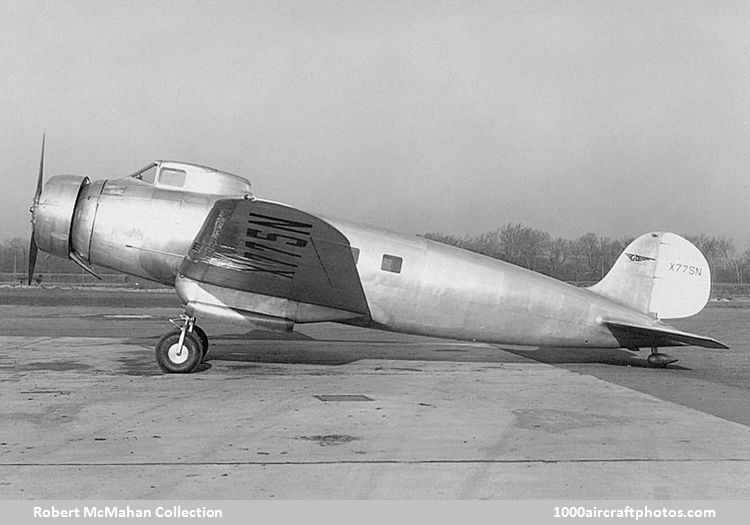The manufacturing rights and the prototype were sold to General Aviation Manufacturing Corporation at Dundalk, Maryland in September 1932. The prototype was fitted with a retractable landing gear (pictured) and in January 1934 it was sold to Mitsui Bussan (Mitsui & Co) of Japan, who passed it on to NKKK (Nihon Koku Kabushiki Kaisha, Japan Air Lines Company) registered as J-BAEP. Soon thereafter it was registered as M-701 in Manchuria (China) to the Japanese controlled paramilitary Manchurian Airlines. It crashed at Haneda Airport, Tokyo, Japan on May 18, 1934.
Before General Aviation was dissolved in 1935, the company produced four additional examples of this type, designated GA-43:
NC82Y (c/n 2202), one of two bought by Swissair, delivered in March 1934 it was initially registered as CH-169, later as HB-LAM. It was sold in 1936 and ended up with the Republicans in Spain.
NC13901 (c/n 2203) was delivered to General Airlines in 1934.
NC13903 (c/n 2204) was powered by a 600 hp Pratt & Whitney R-1340 Wasp nine-cylinder radial engine and was briefly operated by Western Air Express in 1934. On March 19, 1935, the aircraft was sold to Swissair of Switzerland and registered HB-ITU. Just a year later, April 30, 1936, while operating a night mail flight in unfavorable weather conditions from Frankfurt, Germany to Basel, Switzerland, the crew failed to located the airport of Basel. The flight was continued in southeast direction and the aircraft crashed into Mount Rigi, both pilot Ernst Gerber and navigator Arthur Müller were killed.
NX13904 (c/n 2205) was ordered by the Pan American Aviation Supply Corporation of New York, New York. This aircraft was powered by a 660 hp Pratt & Whitney Hornet T1 nine-cylinder radial engine and fitted with twin floats, and a larger fin with an additional ventral fin. Named Bolivar it was used along the Rio Magdalena in Colombia."
